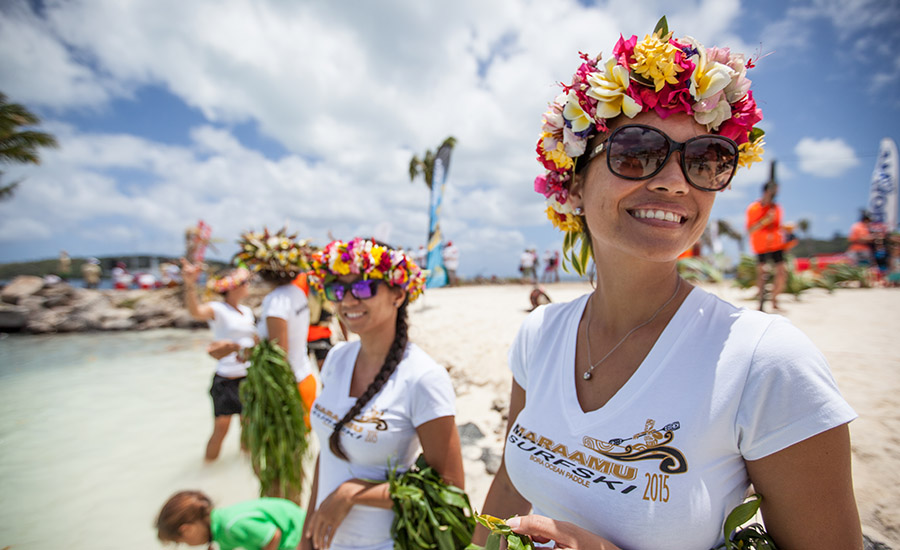Surfskis have an extensive history in Australia, New Zealand and South Africa—warmer countries with long, exposed coastlines. Currently the industry is experiencing a boom, with major growth in participation and racing in these areas, as well as in areas with colder climates, such as the mainland USA and Europe.
The sport of surfski is growing quickly as more and more people are discovering how easy and accessible the sport can be. “Boats are lighter and faster than most sea kayaks and people can cover a greater distance more easily,” says Micky McDonald of Think Kayaks on the appeal of a surfski. “A relative beginner can start picking up waves and having a blast. All you need is a paddle, leash and a PFD and off you go!”
For the beginner, a major advantage to the surfski over a traditional sea kayak is that if conditions tip the paddler out, they can simply climb back aboard. For Nelo Kayaks CEO and Surfski legend Oscar Chalupsky, the “surfski is the most versatile kayak in the world as it can go on any waters and is very safe. If you fall off, you just jump back on and keep going.” It is worth noting that most connect themselves to their boat via leashes, so as to not become separated from their craft.
As you progress, Chalupsky asserts that a surfski becomes a very effective craft for paddling in big surf, as the narrowness and length help it to cut or punch through large or breaking waves. To counteract the initial challenges of paddling and balancing surfskis, many companies are now making wider, more stable boats that accelerate the learning curve. “We have eight different boats in the Think range to suit different abilities,
physique and budgets: shorter, wider boats are good to get people hooked and then they can progress up to the longer, faster,
lighter boats,” explains Micky.
Once the initial familiarization with the craft and sport occurs, a large appeal of the Surfski lies in the speeds you can reach. “You can paddle in any conditions with a top speed of 56 km/h on an ocean wave,” says Chalupsky. It is a speed unmatched by most man-powered watersports crafts, and is what gets many paddlers hooked.
From a fitness perspective, surfskis are an ideal craft. They build core strength, upper body strength, and get the heart rate going in a fun, dynamic environment. “People can have a great workout in an hour without the need to carry lots of equipment,” says Micky. For the inclined, the racing scene features tactical opportunities from distances of 10 kilometers to multi-day races. Famous races include the four-day, 240km race from Port Elizabeth to East London in South Africa, and the infamous Molokai Race in Hawaii. More recently, the racing scene is gaining momentum in North America and Europe. Greg Lesher’s interactive Surfski America Race Database showcases 185 North American races, providing a calendar,
an interactive map, racecourses and results.
At the third Colwyn Bay Blast in North Wales, only the second surfski race to be held in the region, competitors from first-time racers to former UK and World Champions came to take part, tripling the number of entrants from the race’s first year. “It’s plainly obvious to anyone observing this sport that surf skiing is gaining popularity in the colder parts of the world, attracting sponsors and attention from popular brands of boats and surf ski apparel,” writes GB Ocean Ski in their recap of the 2016 event. The GB Ocean Ski website also provides a list of races in Great Britain and Europe, informing aspiring racers of participation opportunities.
Though Australia, New Zealand and South Africa still dominate the international racing scene, the global growth of surfski culture is beginning to show. At the 2015 Ocean Canoe World Championships held in Tahiti, Frenchman Yannick Laousse broke into the men’s top ten, while the top women’s positions were shared between paddlers from New Zealand and the US.
The Ocean is not the only venue seeing a rise in surfski racing. The 2017 Gorge Downwind Champs on the North American Columbia River saw over 190 entrants in the Long-Distance Ski Category. The 2018 event, which will take place from July 16-21st proclaims that only 20 spots remain as of early November 2017. The event anticipates over 600 total participants for the coming year.
Surfski is a versatile and accessible sport only just beginning to gain speed on the global paddlesports scene.
By: Anna Bruno, Kayak Session, Paddle World and Sup World Mag editor


